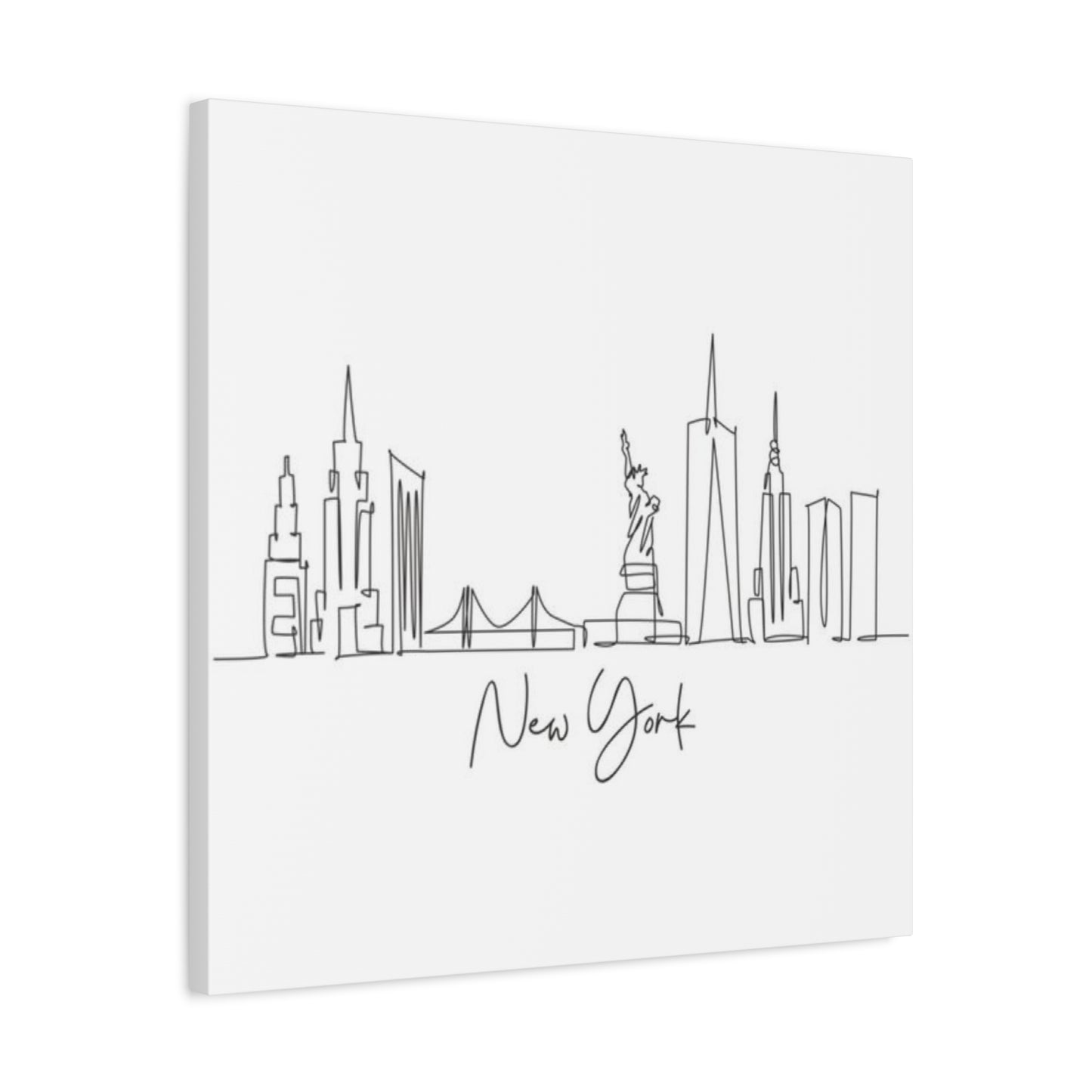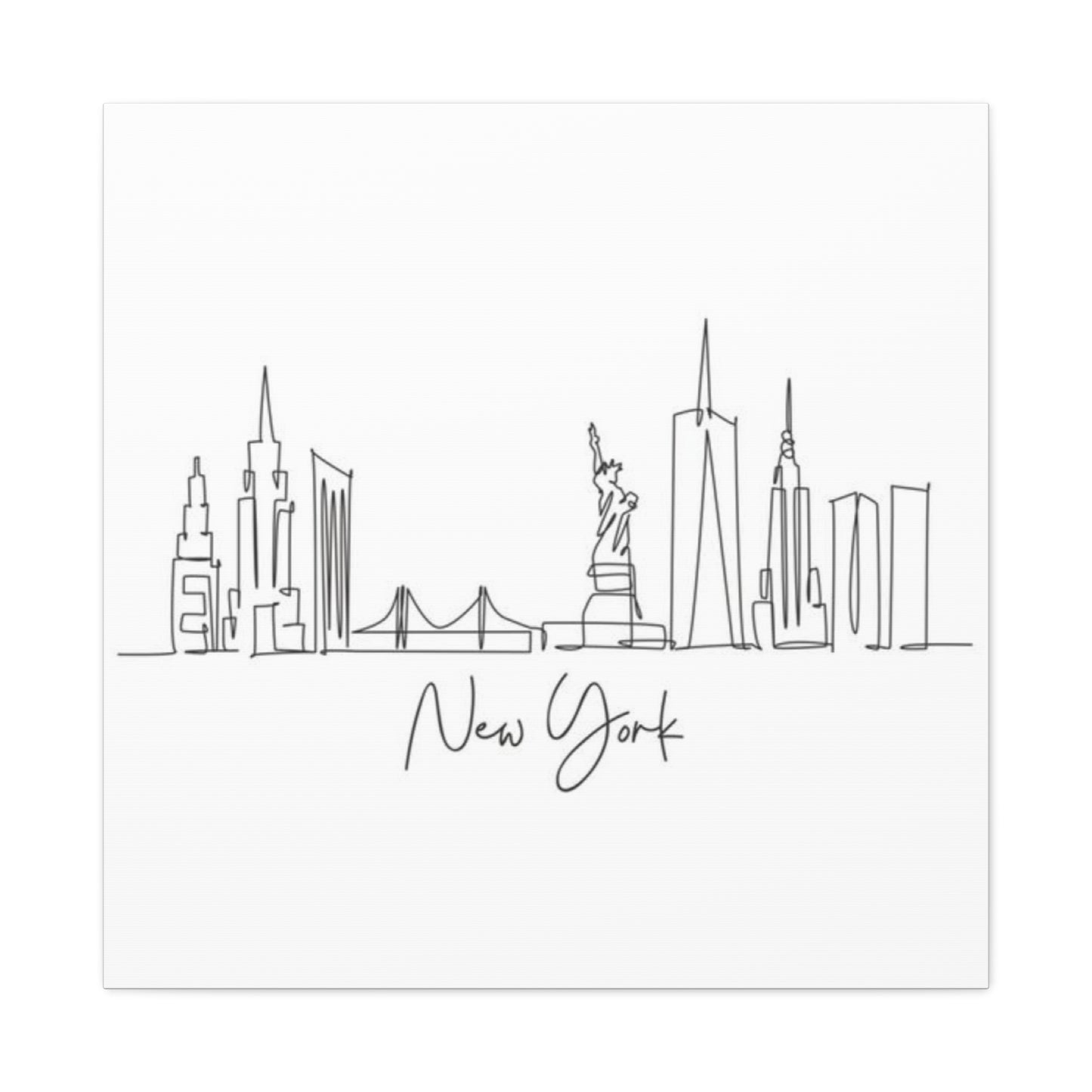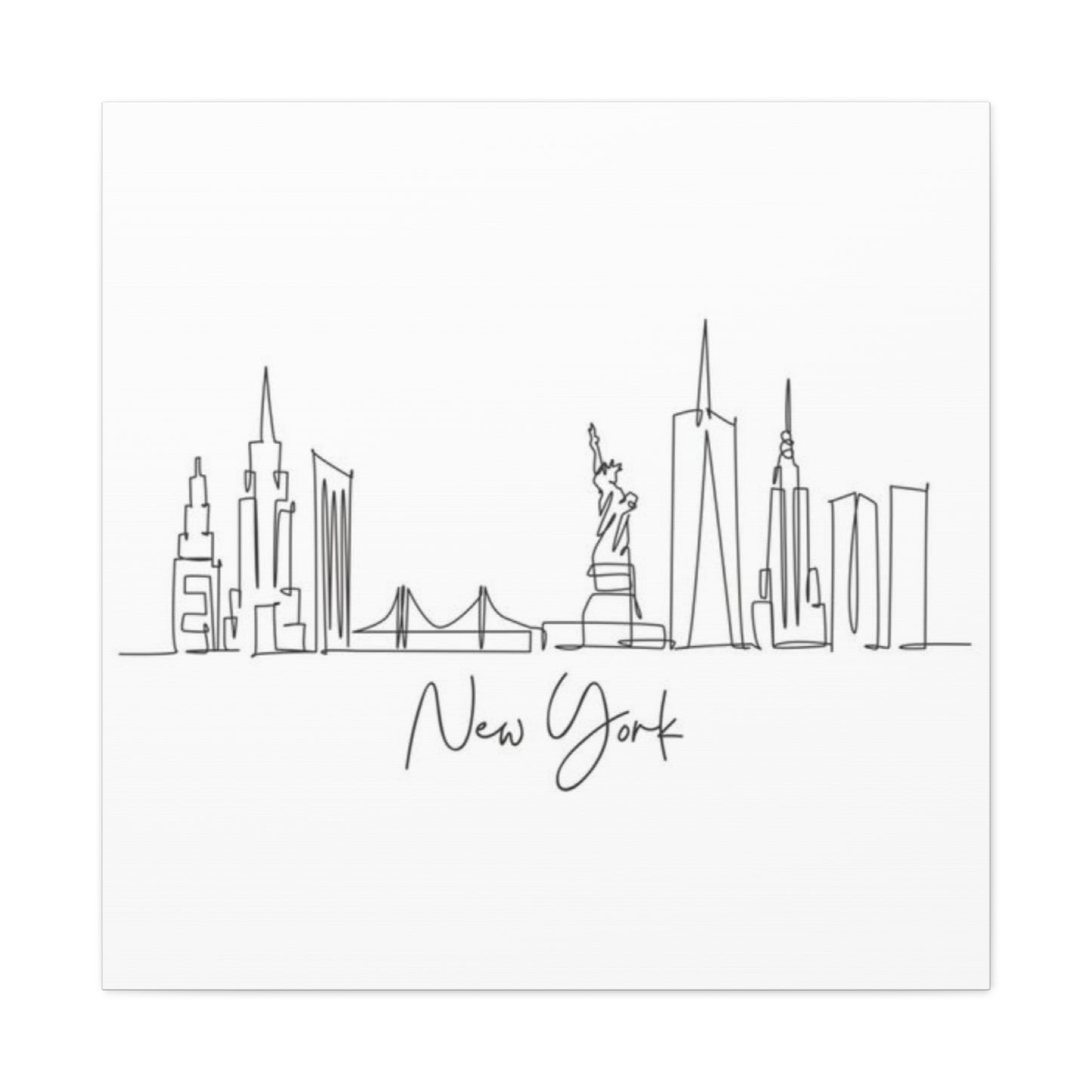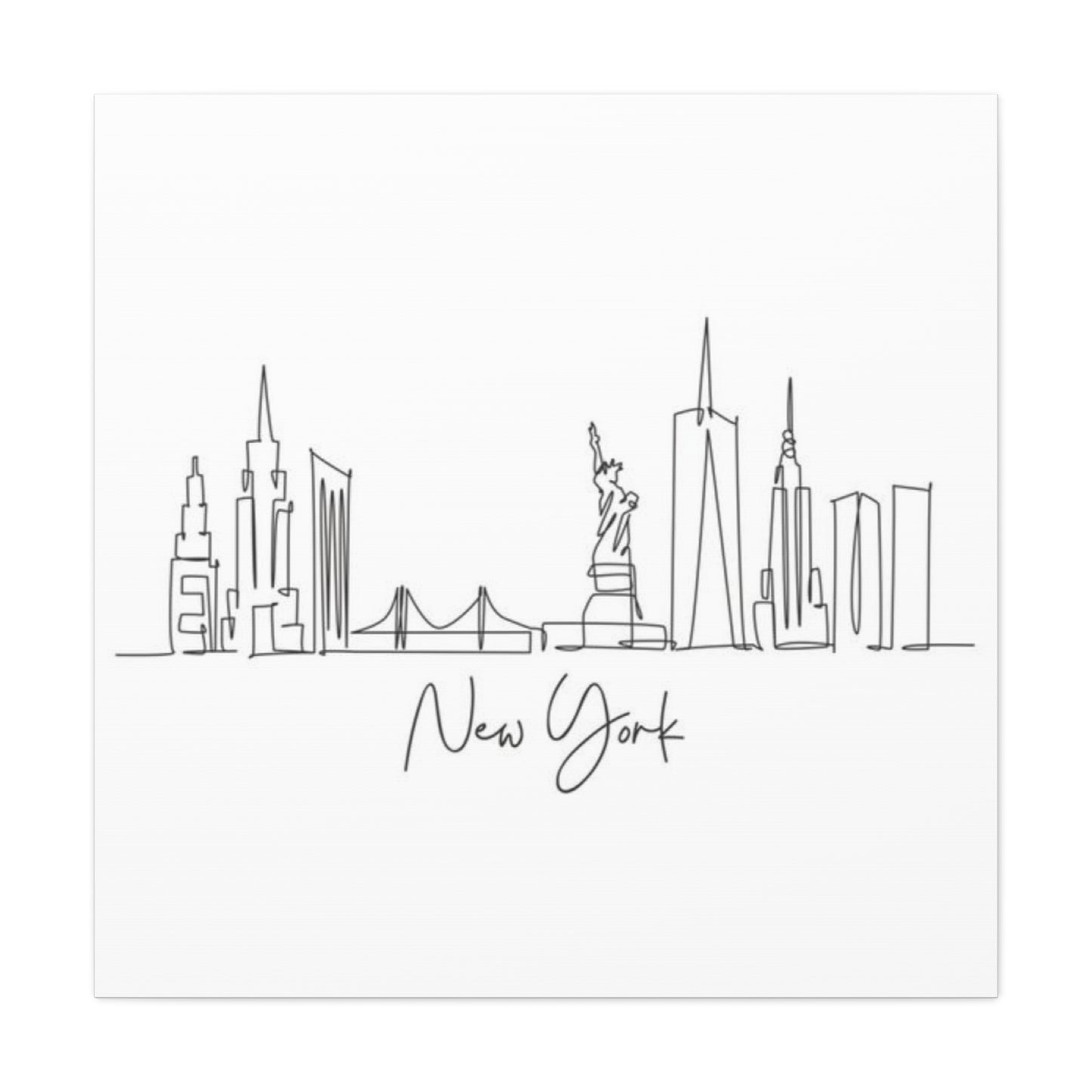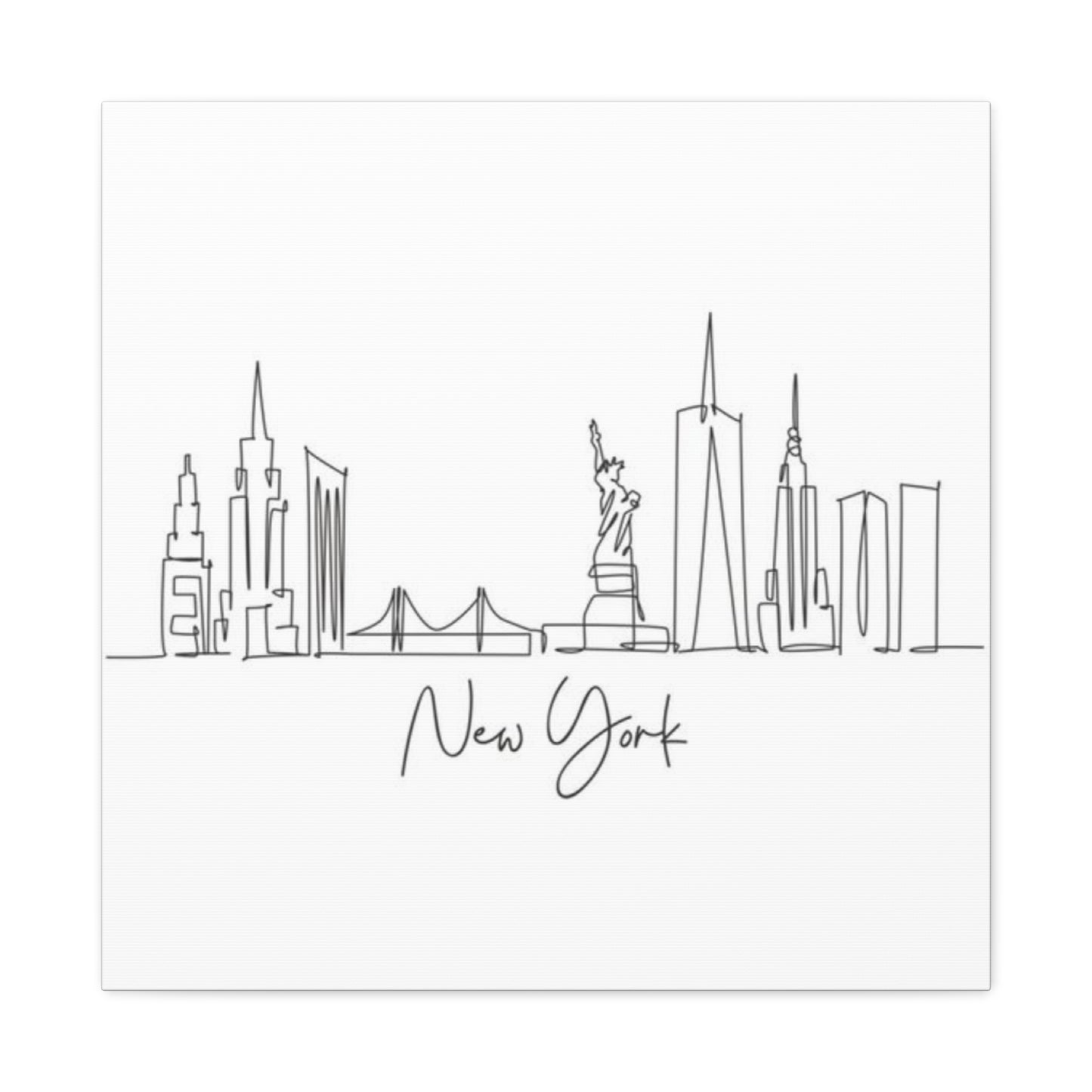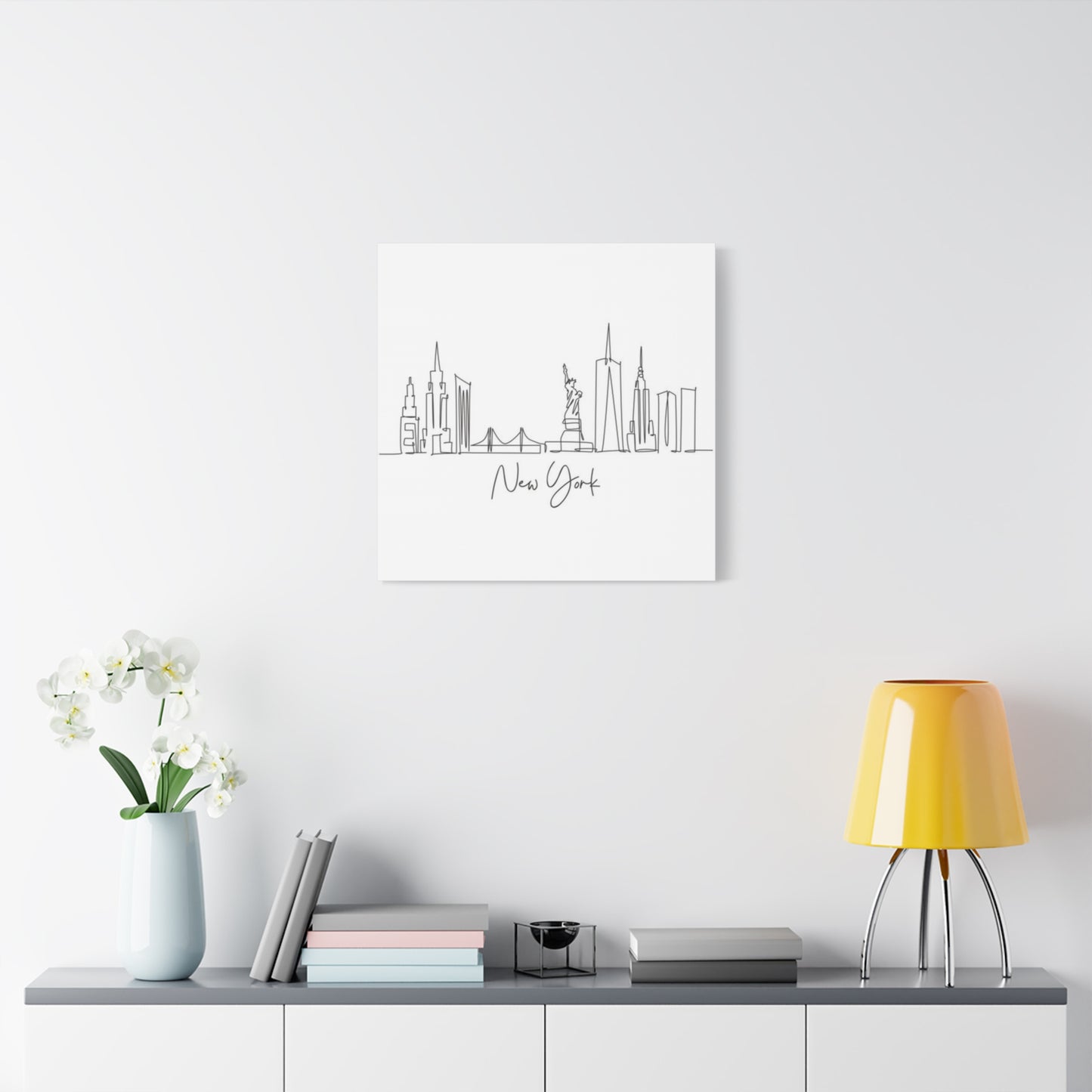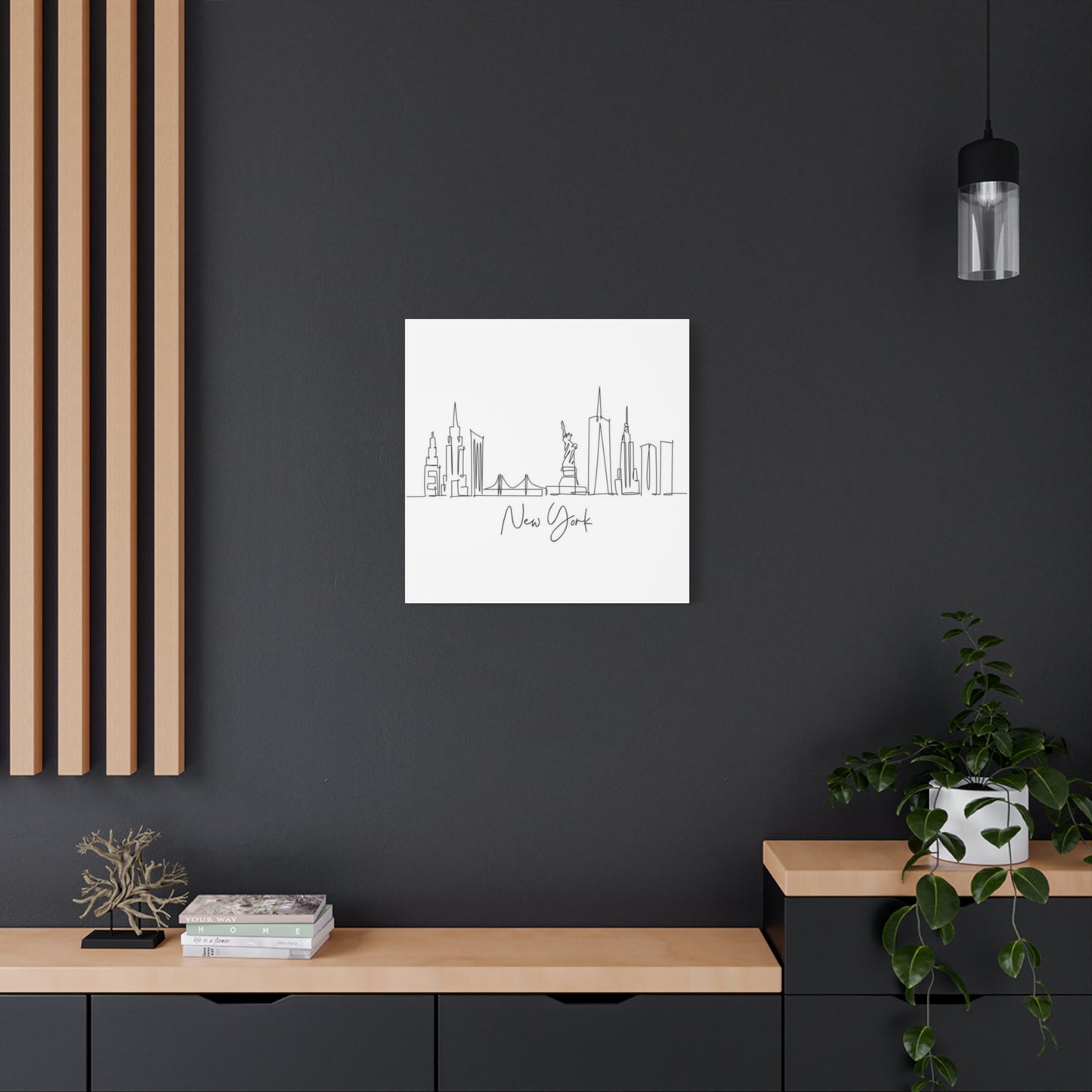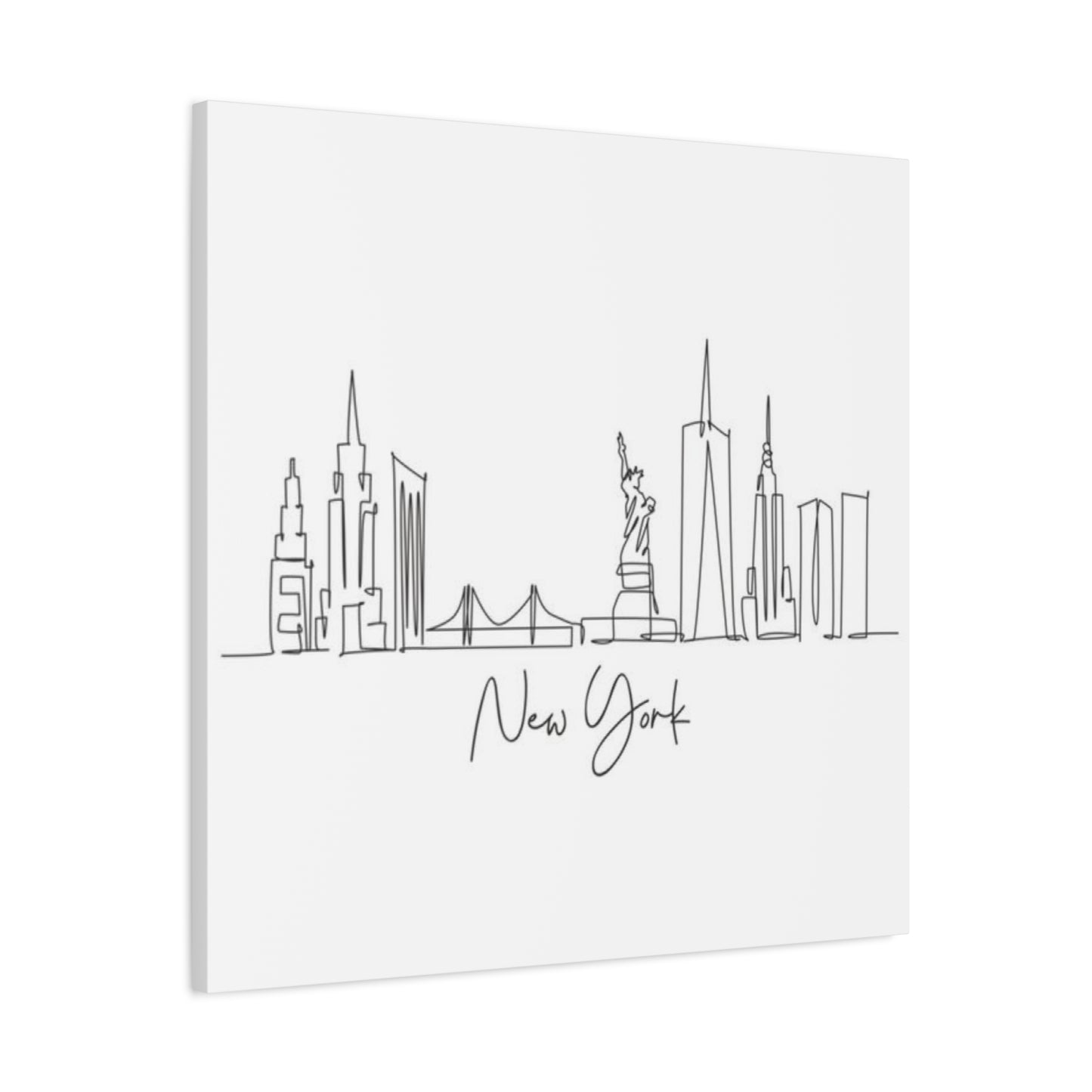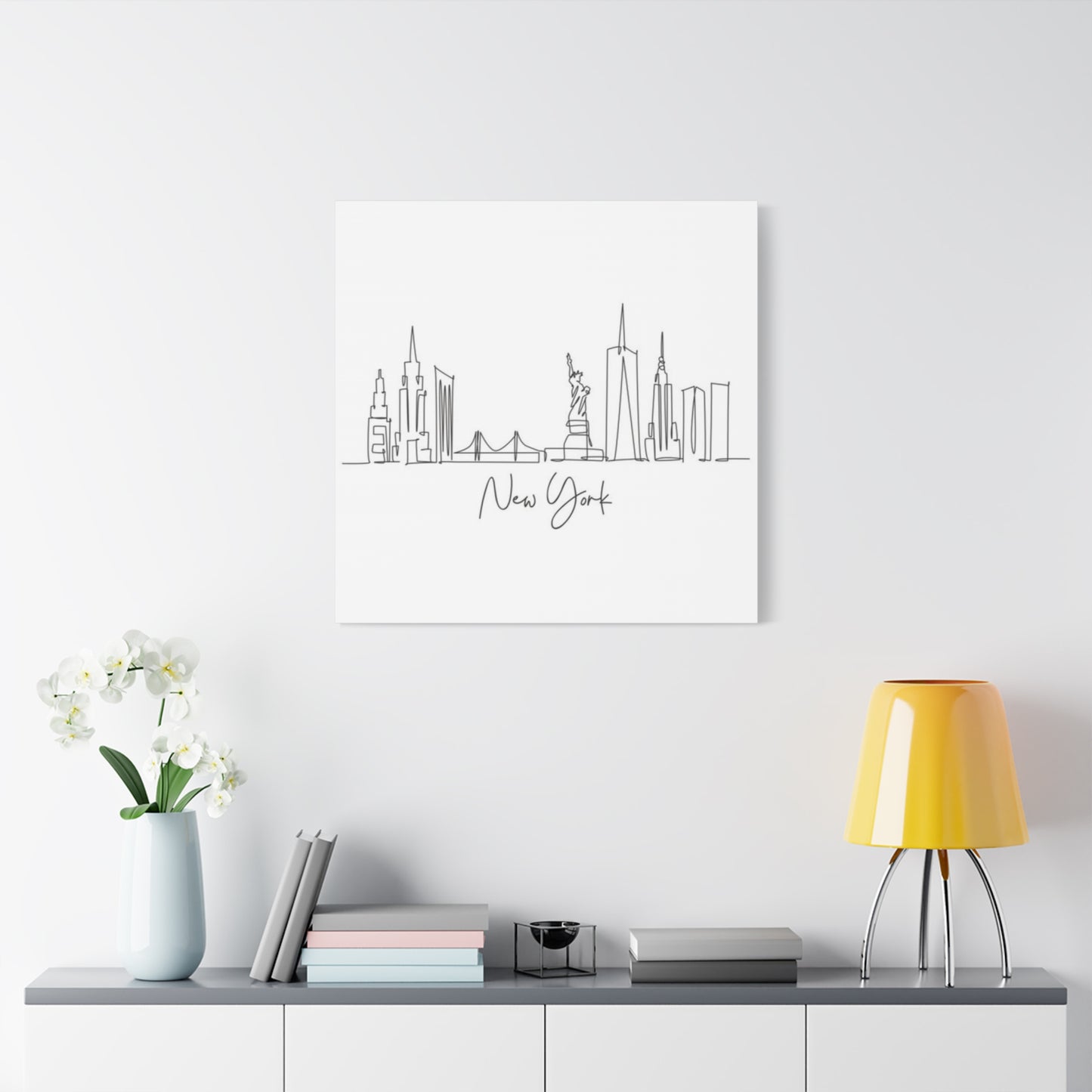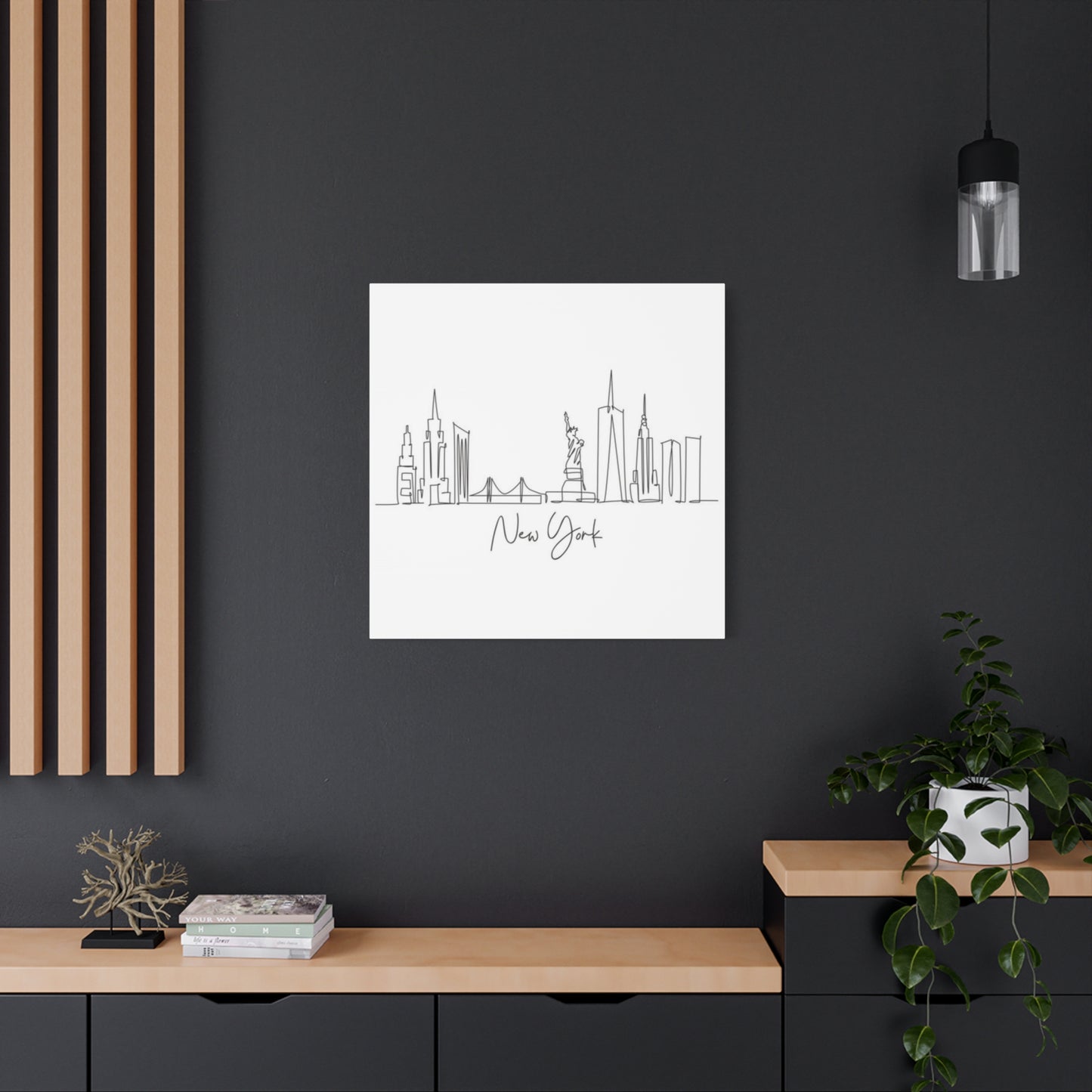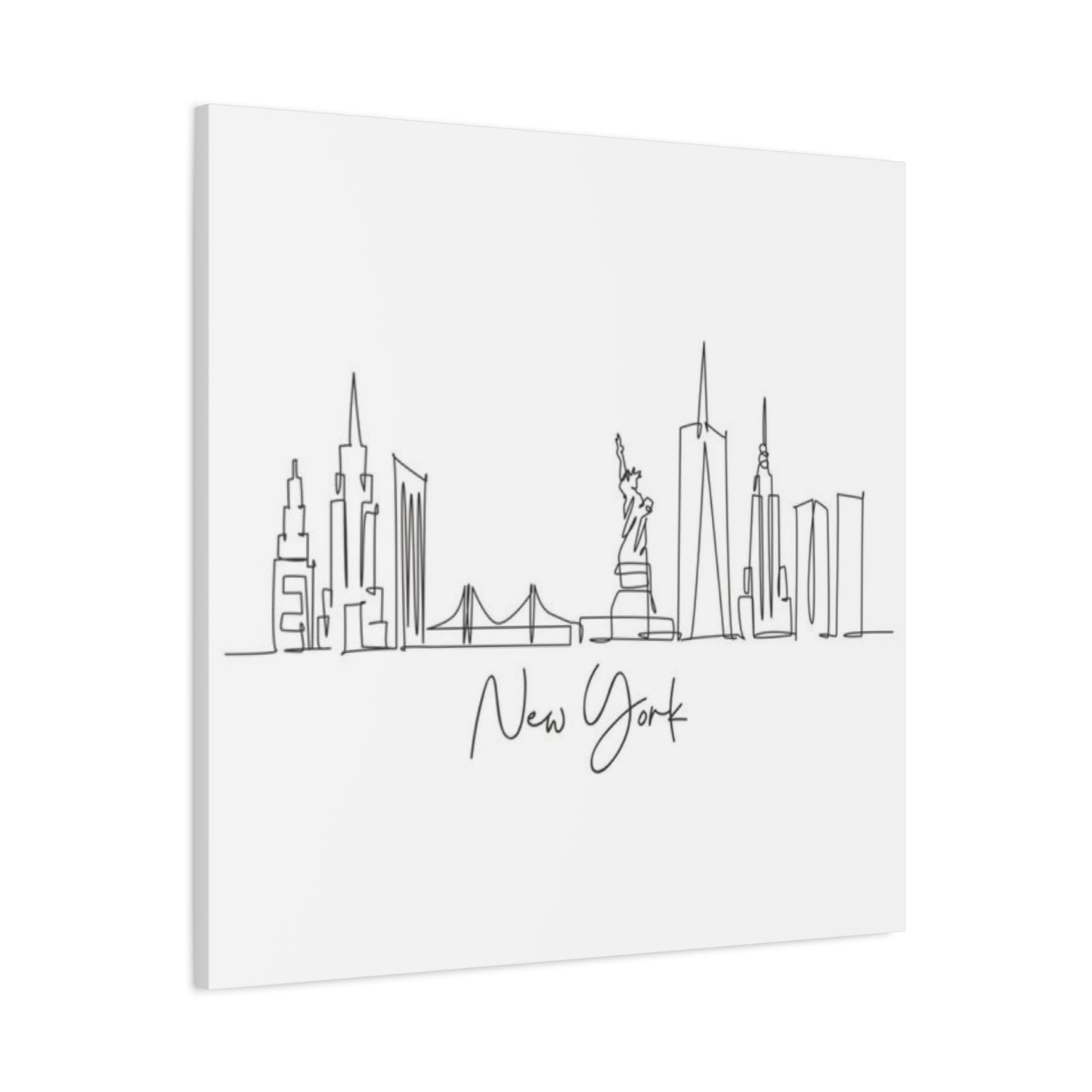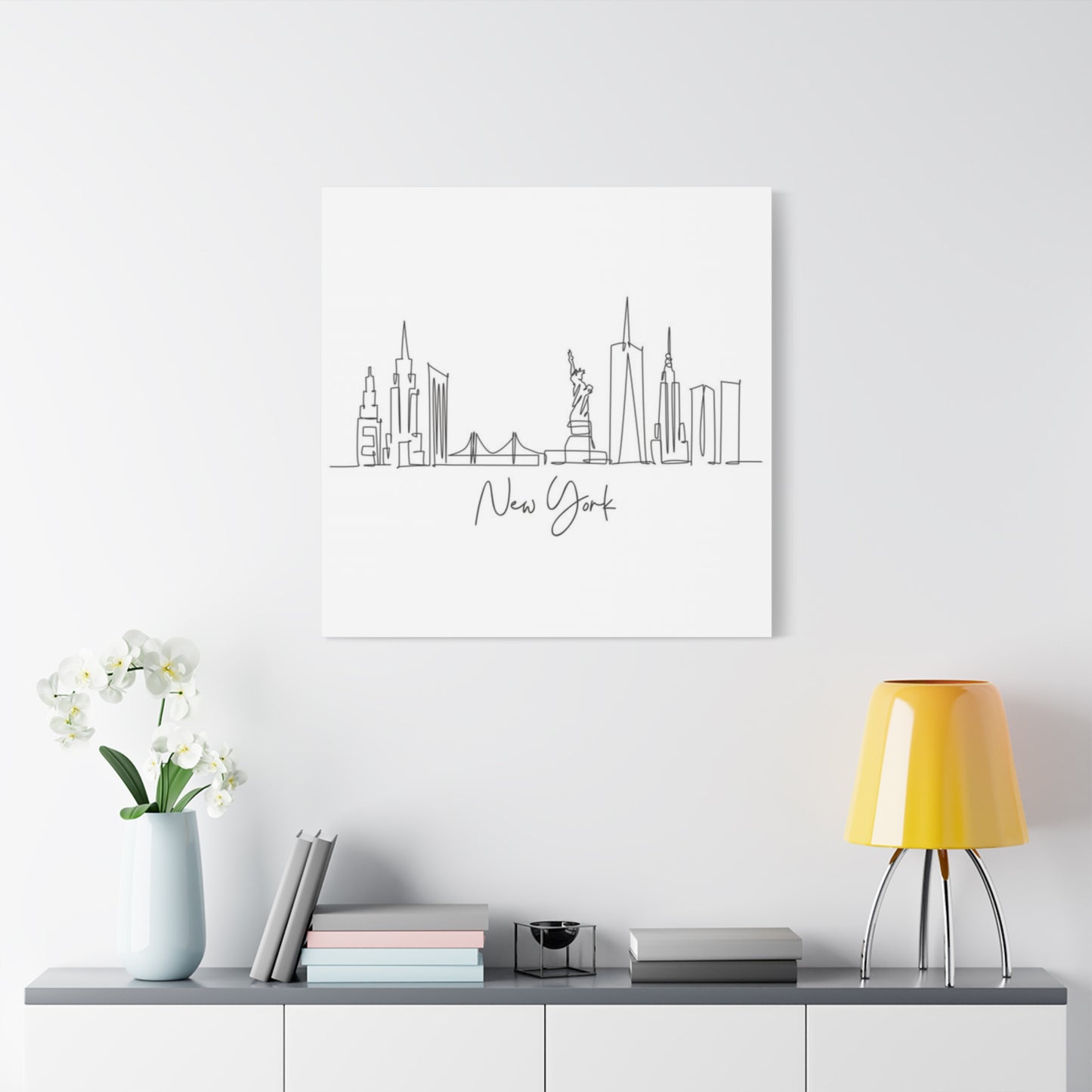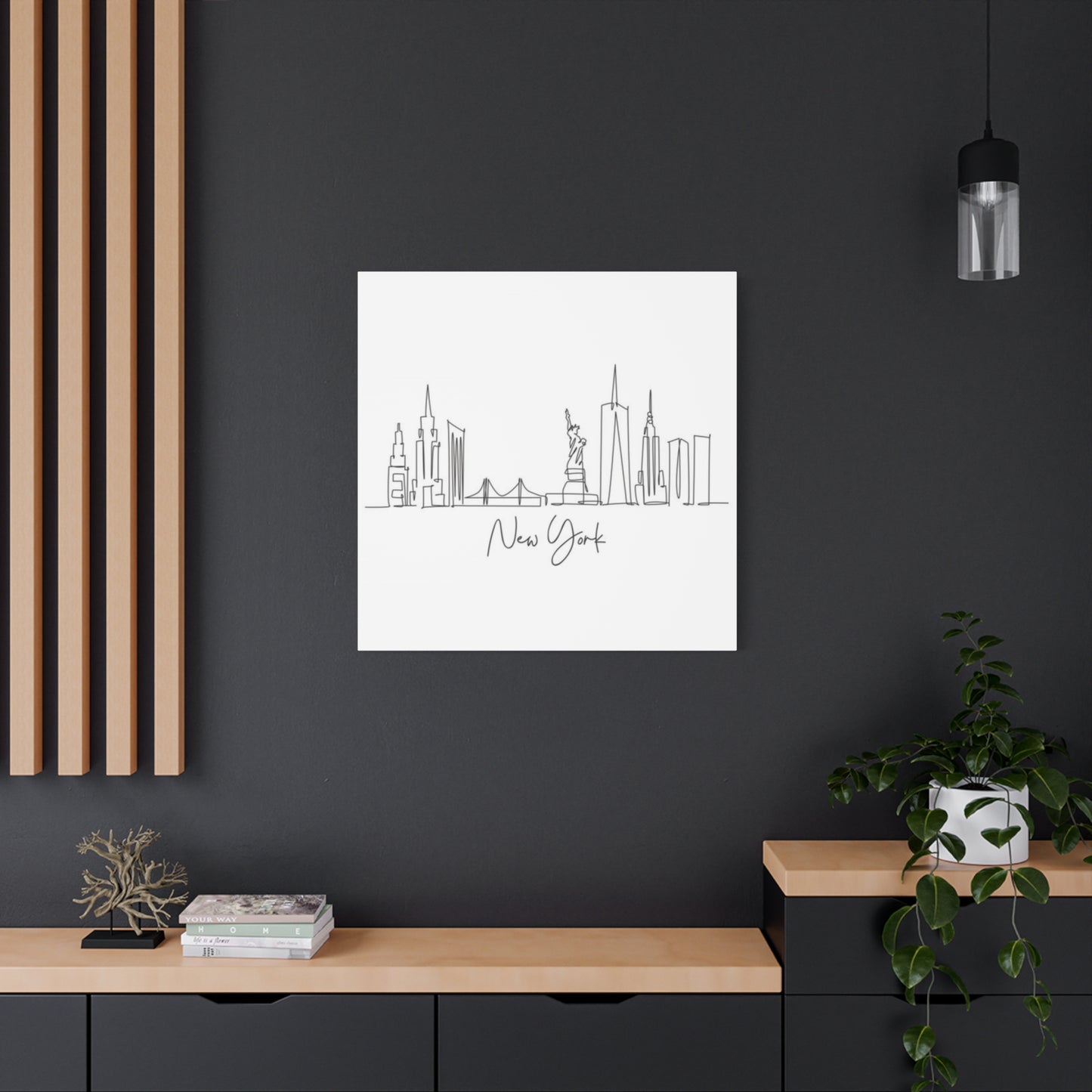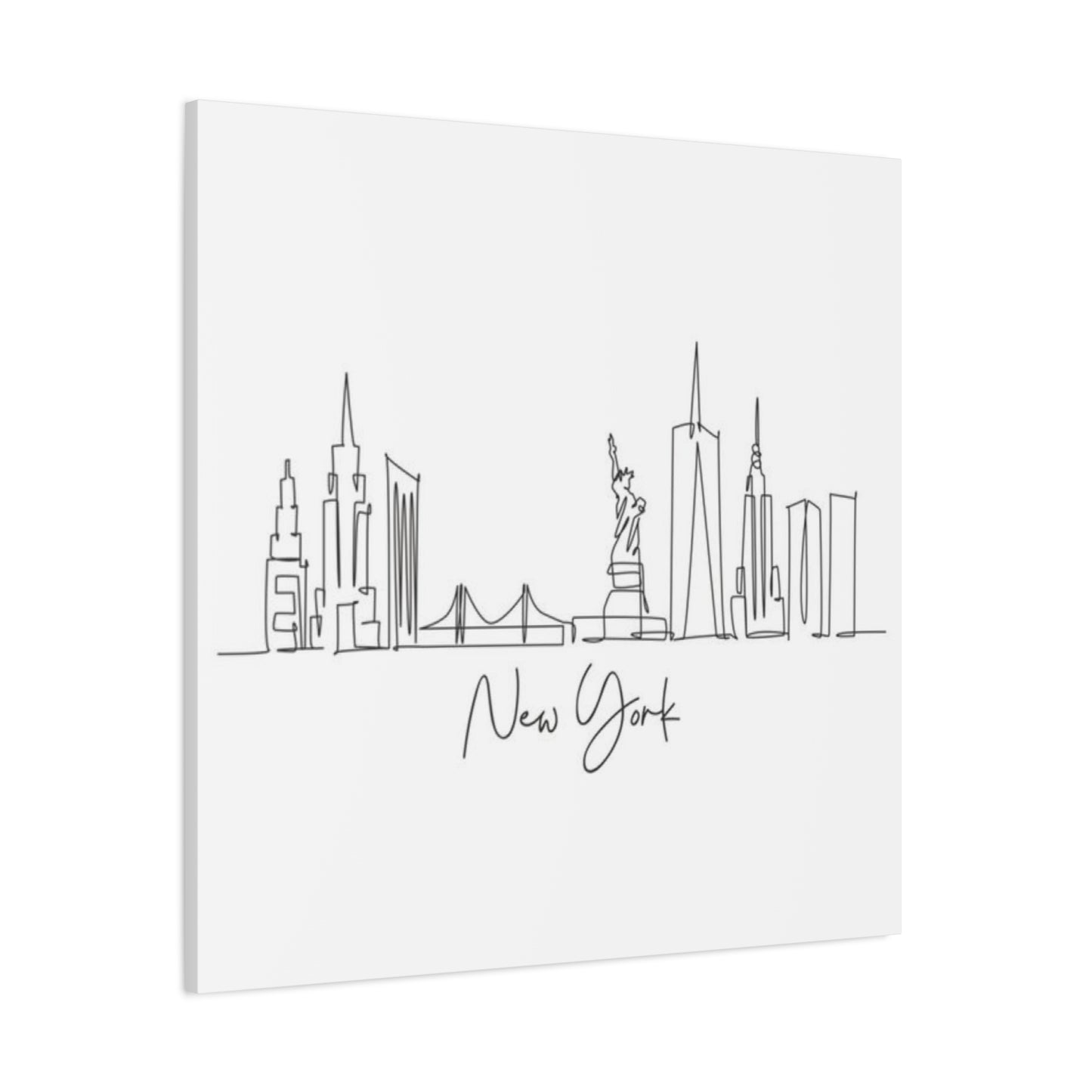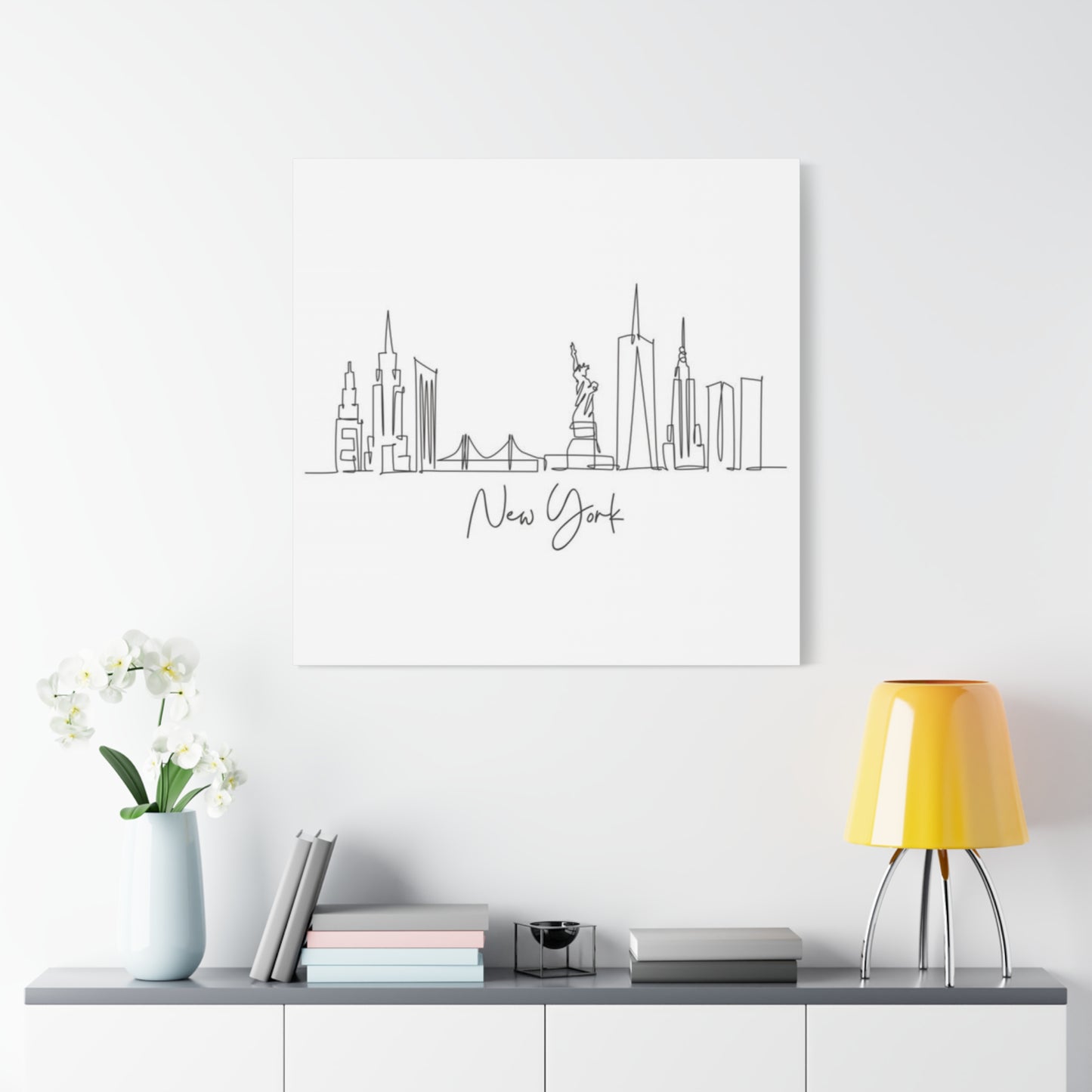NYC Skyline Wall Art: Mastering Urban Landscape Drawing Techniques
Creating stunning NYC skyline wall art requires a deep understanding of architectural forms, perspective techniques, and artistic vision. The metropolitan landscape of New York City offers endless inspiration for artists seeking to capture the essence of urban life through detailed drawings and creative interpretations. This comprehensive exploration will guide you through every aspect of creating magnificent skyline artwork that transforms any room into a celebration of metropolitan beauty.
Essential Techniques for Drawing NYC's Metropolitan Landscape with Accuracy
Mastering the art of drawing New York City's distinctive silhouette demands careful attention to proportional relationships between buildings and understanding of linear perspective. The key to achieving precision lies in establishing proper vanishing points and maintaining consistent scale throughout your composition. Begin by studying reference photographs taken from various vantage points across the city, noting how buildings appear smaller as they recede into the distance.
Professional artists recommend starting with basic geometric shapes to establish the foundation of each structure before adding architectural details. The Empire State Building, One World Trade Center, and Chrysler Building each possess unique characteristics that require specific attention to proportion and detail. Measure the relative heights of buildings using your pencil as a measuring tool, holding it at arm's length to gauge accurate proportions.
Creating accurate perspective requires understanding how parallel lines converge toward vanishing points on the horizon line. For NYC skylines viewed from ground level, typically use two-point perspective to capture the dramatic angles of towering structures. Streets and building edges should follow these perspective guidelines to maintain believable spatial relationships throughout your composition.
Pay special attention to the negative spaces between buildings, as these areas contribute significantly to the overall accuracy of your skyline representation. These gaps create breathing room in your composition and help define individual structures more clearly. Shadows cast by buildings onto adjacent structures add depth and dimensionality to your artwork.
Weather conditions and atmospheric effects influence how the skyline appears from different distances. On clear days, distant buildings appear sharp and well-defined, while hazy conditions soften edges and reduce contrast. Consider these environmental factors when planning your artistic approach and level of detail.
The time of day dramatically affects the appearance of the metropolitan landscape. Morning light creates long shadows stretching westward, while evening light produces the opposite effect. Golden hour lighting, occurring shortly after sunrise or before sunset, provides warm, dramatic illumination that enhances the three-dimensional quality of architectural forms.
Practice drawing individual landmark buildings before attempting comprehensive skyline compositions. This approach allows you to develop familiarity with specific architectural features and proportional relationships without becoming overwhelmed by the complexity of the entire cityscape.
Capturing Iconic NYC Architectural Elements in Artistic Compositions
New York City's architectural diversity presents artists with countless opportunities to explore different styles and periods of construction within a single composition. Art Deco masterpieces like the Chrysler Building showcase intricate decorative elements and distinctive stepped profiles that require careful observation and patient execution. Modern glass towers reflect surrounding buildings and sky, creating complex patterns of light and shadow that challenge artists to represent transparency and reflection convincingly.
The distinctive ziggurat-style setbacks characteristic of many pre-war skyscrapers create dramatic stepped silhouettes against the sky. These architectural features resulted from zoning regulations designed to ensure adequate light reached street level. Understanding this historical context helps artists appreciate the functional beauty of these design elements.
Gothic Revival elements appear in structures like the Woolworth Building, featuring pointed arches, flying buttresses, and elaborate stonework detail. These decorative elements require fine line work and attention to intricate patterns. Study reference materials carefully to capture the essence of these ornamental features without becoming lost in excessive detail.
Contemporary architectural additions to the skyline, such as One World Trade Center and the residential towers of Billionaire's Row, introduce new geometric forms and materials to traditional skyline compositions. These structures often feature clean lines, geometric patterns, and innovative facade treatments that contrast beautifully with older architectural styles.
Bridges connecting Manhattan to surrounding boroughs provide excellent foreground elements for skyline compositions. The Brooklyn Bridge's distinctive Gothic towers and web of cables create interesting geometric patterns that complement the vertical emphasis of skyscraper compositions. Include these structural elements to add depth and visual interest to your artwork.
Water features, including the Hudson and East Rivers, reflect skyline imagery and create opportunities for exploring symmetrical compositions. Reflections rarely mirror the skyline exactly due to water movement and viewing angles, so observe carefully and represent these distortions naturally rather than creating perfect mirror images.
Rooftop details, including water towers, ventilation systems, and communication equipment, add authentic character to skyline representations. These utilitarian elements appear throughout NYC's rooftops and contribute to the city's distinctive character. Include these details selectively to maintain focus on major architectural elements while adding realistic texture.
Historical Development of NYC Metropolitan Artwork Traditions
The artistic representation of New York City's evolving skyline reflects changing architectural styles, artistic movements, and cultural perspectives throughout different historical periods. Early 20th-century artists like Georgia O'Keeffe and Charles Sheeler pioneered modernist interpretations of urban landscapes, emphasizing geometric forms and industrial beauty. Their work established precedents for abstracting architectural elements while maintaining recognizable metropolitan characteristics.
The Ashcan School movement of the early 1900s documented urban life with unprecedented realism, including detailed representations of the growing skyline. Artists like John Sloan and George Bellows captured the energy and grit of rapid urban development, establishing traditions of honest urban representation that continue influencing contemporary artists.
Depression-era Works Progress Administration projects employed numerous artists to document American cities, including extensive NYC skyline studies. These government-sponsored artworks emphasized social realism and accessible artistic styles, creating an extensive archive of metropolitan imagery from this crucial period of urban development.
Mid-century pop artists, including Andy Warhol and Roy Lichtenstein, transformed skyline imagery through screen printing and commercial art techniques. Their approaches democratized urban landscape art, making metropolitan imagery accessible through mass-produced prints and posters. This period established connections between fine art and popular culture representations of city life.
Abstract Expressionist painters like Willem de Kooning incorporated urban energy and chaos into non-representational works inspired by NYC's dynamic environment. While not literally depicting skylines, these artists translated the emotional impact of metropolitan life into powerful abstract compositions that captured the city's essence through color, gesture, and movement.
Contemporary street artists and muralists continue evolving skyline representation traditions through large-scale public artworks. These artists often combine traditional techniques with modern materials and concepts, creating hybrid approaches that speak to current urban experiences while honoring historical artistic traditions.
Photography's influence on skyline artwork cannot be overstated, as cameras enabled artists to capture precise architectural details and momentary lighting effects previously impossible to document. This technological advancement allowed artists to work from detailed reference materials, increasing accuracy while enabling more complex compositions.
The development of digital art tools has revolutionized contemporary skyline artwork creation, allowing artists to manipulate images, experiment with colors, and create hybrid works combining photography with traditional drawing and painting techniques. These technological advances continue expanding possibilities for metropolitan landscape representation.
Detailed Methodology for Sketching Manhattan's Distinctive Profile
Creating compelling sketches of Manhattan's skyline requires systematic approaches that break down complex urban landscapes into manageable components. Begin by establishing the horizon line, which typically falls at approximately one-third of your composition's height when viewed from ground level or elevated positions across rivers. This placement follows classical composition principles while providing adequate room for both sky and architectural elements.
Identify major landmark buildings that will serve as anchor points for your composition. The Empire State Building, Chrysler Building, and One World Trade Center typically function as primary focal points due to their distinctive profiles and central locations within the skyline. Establish these structures first, using light construction lines to indicate their basic proportions and positions relative to your horizon line.
Work outward from these anchor points, adding secondary buildings that fill the skyline between major landmarks. Pay careful attention to the varying heights and profiles of different structures, as this variation creates the characteristic rhythm and visual interest of NYC's metropolitan profile. Avoid making buildings too similar in height or character, as this reduces the dynamic quality of the composition.
Consider the viewing angle when establishing perspective guidelines. Skylines viewed straight-on require minimal perspective correction, while oblique viewing angles necessitate careful attention to vanishing points and foreshortening effects. Use construction lines to maintain consistent perspective relationships throughout your composition.
Atmospheric perspective plays a crucial role in creating convincing depth within skyline compositions. Buildings closest to the viewer should appear darker and more detailed, while distant structures appear lighter and less defined. This natural optical phenomenon helps establish spatial relationships and prevents the skyline from appearing flat or two-dimensional.
Include foreground elements such as trees, smaller buildings, or architectural details to establish scale relationships and create visual depth. These elements help viewers understand the massive scale of skyscrapers by providing familiar reference points for size comparison.
Pay attention to the silhouette quality of your skyline against the sky. The irregular outline created by varying building heights should create an interesting and dynamic edge that draws the eye along the composition. Avoid creating monotonous or repetitive patterns that reduce visual interest.
Construction techniques should emphasize accuracy without becoming rigid or mechanical. Use measured approaches for establishing proportions, but allow for artistic interpretation in details and finishing touches. The goal is creating recognizable and architecturally sound representations while maintaining expressive artistic qualities.
Exploring Various Artistic Mediums for Metropolitan Artwork
Different artistic mediums offer unique advantages and challenges when creating NYC skyline artwork, each contributing distinct visual qualities and expressive possibilities. Pencil drawings provide precise control over line weight, shading gradations, and fine detail work essential for architectural subjects. Graphite's range from light, delicate lines to rich, dark shadows makes it ideal for representing the dramatic contrasts found in urban landscapes.
Charcoal offers broader tonal ranges and more dramatic contrast possibilities than graphite, making it excellent for capturing the bold shadows and strong light effects characteristic of metropolitan environments. Compressed charcoal creates deep, rich darks, while vine charcoal provides softer, more atmospheric effects suitable for representing distant buildings and sky areas.
Ink drawings, whether created with pens or brushes, emphasize line quality and high contrast relationships between light and shadow areas. Cross-hatching and stippling techniques allow artists to create sophisticated tonal variations while maintaining the crisp, architectural quality appropriate for skyline subjects. Ink's permanence demands confident execution, encouraging decisive mark-making that can enhance the dynamic quality of urban artwork.
Watercolor painting brings luminosity and atmospheric effects that beautifully represent the changing light conditions affecting NYC's skyline throughout different times of day. Wet-on-wet techniques create soft, atmospheric backgrounds, while wet-on-dry applications allow for precise architectural details. The transparent nature of watercolor makes it ideal for representing glass buildings and their reflective qualities.
Acrylic paints combine the versatility of oils with faster drying times, making them practical for artists working on detailed architectural subjects. Heavy body acrylics can be applied thickly for textural effects representing building materials, while fluid acrylics work well for glazing techniques that create atmospheric depth and subtle color transitions.
Oil paints provide the longest working time, allowing for subtle blending and detailed refinement over extended periods. This medium excels at representing complex lighting effects and subtle color relationships found in metropolitan environments. The ability to work wet-into-wet enables smooth gradations ideal for sky areas and atmospheric effects.
Digital media offers unprecedented flexibility for experimenting with compositions, colors, and effects without committing to permanent marks. Drawing tablets and software programs provide tools that simulate traditional media while offering unique capabilities like layering, easy corrections, and hybrid techniques combining photography with drawing.
Mixed media approaches combine multiple materials to achieve effects impossible with single mediums. Combining photographic elements with drawn details, using collage techniques with painted areas, or incorporating textural materials creates rich, complex artworks that reflect the diverse, layered nature of urban environments.
Integrating Famous NYC Landmarks into Skyline Compositions
Successfully incorporating New York City's iconic landmarks into skyline artwork requires understanding each structure's distinctive characteristics and architectural significance within the broader urban context. The Empire State Building's Art Deco profile, with its distinctive stepped crown and symmetrical facade, serves as an excellent focal point due to its central Manhattan location and instantly recognizable silhouette.
The Chrysler Building presents unique challenges and opportunities with its elaborate metallic crown featuring eagle gargoyles, metallic arches, and intricate geometric patterns. These decorative elements require careful observation and selective representation to maintain the building's character without overwhelming the composition with excessive detail. The building's position in Midtown East provides excellent opportunities for creating dynamic angular compositions.
One World Trade Center's geometric simplicity contrasts beautifully with older architectural styles, its chamfered corners and clean lines representing contemporary design principles. The building's symbolic importance adds emotional weight to compositions, while its position in Lower Manhattan provides opportunities for compositions including the Hudson River and New Jersey skyline as background elements.
The Brooklyn Bridge's Gothic Revival towers and distinctive cable patterns create excellent foreground elements for Manhattan skyline views. Including this structural masterpiece adds historical context and provides strong geometric elements that complement the vertical emphasis of skyscraper compositions. The bridge's pedestrian walkway offers unique vantage points for skyline artwork.
The Flatiron Building's unusual triangular profile makes it an interesting compositional element, particularly when viewed from specific angles that emphasize its distinctive wedge shape. This building works well as a mid-ground element in compositions viewed from the south, where its relationship to taller Midtown structures creates interesting scale comparisons.
St. Patrick's Cathedral provides architectural contrast with its Gothic spires rising between modern skyscrapers. Including religious architecture in skyline compositions adds cultural depth and historical continuity, representing the layers of development that characterize NYC's urban landscape. The cathedral's limestone facade and vertical emphasis complement surrounding steel and glass structures.
The United Nations Headquarters building represents mid-century modernist architecture with its glass curtain wall and horizontal emphasis contrasting with the vertical dominance of traditional skyscrapers. Including this structure adds architectural diversity while representing NYC's international significance and modernist design heritage.
Central Park's green areas provide essential breathing room in dense urban compositions, offering opportunities to include natural elements that balance architectural intensity. The park's relationship to surrounding buildings creates interesting edge conditions where nature meets urban development, adding visual interest and compositional variety.
Advantages of NYC Metropolitan Artwork as Home Decoration
NYC skyline artwork transforms residential environments by bringing urban energy and sophisticated aesthetic appeal into living areas. The dramatic vertical emphasis of skyscraper compositions creates visual interest and draws the eye upward, making rooms appear larger and more dynamic. This effect particularly benefits homes with standard ceiling heights, where vertical elements can enhance the sense of dimensional generosity.
Metropolitan artwork serves as excellent conversation pieces, providing focal points that engage viewers and stimulate discussion about urban culture, architecture, and artistic technique. The recognizable nature of NYC landmarks creates immediate connections for viewers familiar with the city, while the artistic interpretation adds personal expression and creative vision to familiar subjects.
The monochromatic nature of many skyline artworks makes them versatile design elements that complement various color schemes and decorating styles. Black and white or sepia-toned pieces work particularly well in contemporary, minimalist, or industrial design contexts, while colorful interpretations can enhance more eclectic or traditional decorating approaches.
Large-scale skyline artwork creates dramatic focal points suitable for prominent display areas such as living rooms, dining rooms, or office environments. The horizontal format of most skyline compositions works well above furniture pieces like sofas or credenzas, providing visual balance and filling wall areas effectively.
The urban subject matter appeals particularly to city dwellers or those with connections to NYC, creating personal significance beyond purely aesthetic considerations. This emotional connection enhances the artwork's meaning within the home environment, making it more than mere decoration but rather a reflection of personal history and cultural identity.
Skyline artwork can serve educational purposes, particularly for children learning about architecture, urban planning, or American history. The recognizable landmarks provide opportunities for discussing engineering achievements, historical events, and cultural significance while maintaining visual appeal appropriate for home display.
The timeless quality of architectural subjects ensures that skyline artwork remains relevant and appealing over extended periods, unlike trend-based decorative elements that may become dated. Well-executed architectural artwork can serve as long-term design investments that maintain their aesthetic and monetary value.
Different sizes and formats of skyline artwork accommodate various display needs, from small accent pieces suitable for intimate areas to large statement pieces appropriate for grand display walls. This scalability makes metropolitan artwork suitable for different room sizes and design contexts throughout the home.
Contrasting Minimalist and Detailed Approaches to NYC Skyline Art
Minimalist approaches to NYC skyline artwork emphasize essential forms and eliminate unnecessary details, creating powerful compositions through selective representation and careful editing. This aesthetic philosophy focuses on capturing the fundamental character of the metropolitan landscape through simplified shapes, limited color palettes, and strong compositional structures. Minimalist skyline art often reduces complex architectural forms to their most basic geometric components.
The minimalist approach benefits from careful selection of viewpoints that present clear, uncluttered skyline profiles. Distant viewing positions naturally simplify architectural details while maintaining recognizable building silhouettes. This editing process requires artists to identify the most characteristic and essential elements of each structure while eliminating secondary details that might complicate the composition.
Color reduction in minimalist skyline art often employs monochromatic schemes or severely limited palettes that emphasize form over surface detail. Black and white treatments can be particularly effective, as they force viewers to focus on shapes, proportions, and compositional relationships rather than being distracted by color variations or decorative elements.
Negative space plays a crucial role in minimalist compositions, with areas of sky and water providing breathing room that balances the density of architectural elements. These empty areas become active compositional elements that help define building shapes while creating visual rest areas that prevent the composition from becoming overwhelming.
Detailed approaches to NYC skyline artwork celebrate the complexity and richness of urban architecture through careful representation of surface textures, architectural ornamentation, and environmental effects. This approach requires extensive observation and patient execution to capture the intricate relationships between different materials, lighting conditions, and atmospheric effects that contribute to the metropolitan environment's character.
Architectural ornamentation in detailed approaches includes elements like cornices, window details, surface materials, and decorative features that contribute to each building's individual character. These elements require close observation and careful rendering techniques to represent accurately while maintaining their integration within the broader composition.
Atmospheric effects in detailed skyline artwork include weather conditions, lighting variations, and environmental factors that affect the appearance of architectural forms. Representing these subtle influences adds realism and emotional depth to compositions while demonstrating the artist's observational skills and technical proficiency.
The choice between minimalist and detailed approaches often depends on the intended use of the artwork, display context, and personal aesthetic preferences. Minimalist pieces work well in contemporary design environments where clean lines and uncluttered aesthetics are valued, while detailed works appeal to viewers who appreciate technical skill and architectural accuracy.
Techniques for Adding Depth and Three-Dimensional Quality to Skyline Sketches
Creating convincing three-dimensional depth in two-dimensional skyline artwork requires understanding and applying several fundamental artistic principles that simulate the way human vision perceives spatial relationships. Atmospheric perspective serves as the primary tool for establishing depth, where distant objects appear lighter, less detailed, and cooler in color temperature compared to foreground elements. This natural optical phenomenon results from atmospheric particles scattering light and reducing contrast over distance.
Linear perspective provides the structural framework for establishing believable spatial relationships within skyline compositions. One-point perspective works well for straight-on skyline views, where building faces appear parallel to the picture plane and only their depths recede toward a central vanishing point. Two-point perspective becomes necessary when viewing skylines from oblique angles, where both the fronts and sides of buildings recede toward separate vanishing points.
Overlapping forms create immediate depth cues by establishing clear relationships between foreground and background elements. When one building appears in front of another, viewers instinctively understand their relative positions in depth. Careful planning of these overlapping relationships helps create layered compositions that guide the eye through different depth zones within the artwork.
Size variation based on distance provides another powerful depth indicator, where identical or similar structures appear progressively smaller as they recede into the background. This principle applies not only to major architectural elements but also to smaller details like windows, which should decrease in apparent size consistently with their distance from the viewer.
Value contrast serves as a crucial depth-creating tool, where foreground elements typically display the greatest range of light and dark values, while background elements show progressively reduced contrast ranges. This principle works in conjunction with atmospheric perspective to create convincing spatial separation between different areas of the composition.
Detail graduation supports depth perception by showing progressively less architectural detail in distant buildings compared to foreground structures. Foreground buildings might include individual windows, surface textures, and ornamental details, while background buildings appear as simplified silhouettes with minimal internal detail.
Shadow patterns contribute significantly to three-dimensional modeling of architectural forms while also creating depth relationships between structures. Cast shadows help establish the relative positions of buildings and provide information about lighting direction and intensity. Form shadows model the three-dimensional character of individual structures.
Color temperature variations enhance atmospheric perspective effects, where warm colors appear to advance toward the viewer while cool colors recede into the background. This principle can be applied even in limited color palettes by varying the warmth or coolness of grays and neutrals used in different areas of the composition.
Renowned Artists Celebrated for Metropolitan Landscape Artwork
The artistic representation of NYC's skyline has attracted numerous acclaimed artists throughout different historical periods, each contributing unique perspectives and techniques that have influenced contemporary approaches to urban landscape artwork. Georgia O'Keeffe's paintings of NYC architecture during the 1920s established important precedents for abstracting urban forms while maintaining their essential character and emotional impact.
O'Keeffe's "City Night" and "The Shelton with Sunspots" demonstrate her ability to transform architectural subjects into powerful abstract compositions that capture the energy and dynamism of urban life. Her close-up viewpoints and simplified forms influenced subsequent generations of artists working with metropolitan subjects, showing how architectural elements could be interpreted through personal artistic vision.
Charles Sheeler's precisionist paintings and photographs of urban and industrial subjects, including his famous "Church Street El" series, established important connections between fine art and documentary approaches to metropolitan representation. His work demonstrated how careful observation and technical precision could transform everyday urban elements into compelling artistic subjects.
Edward Hopper's urban scenes, while not specifically focused on skylines, captured the mood and atmosphere of city life in ways that influenced how subsequent artists approached metropolitan subjects. His treatment of light, shadow, and architectural forms provided models for representing the emotional qualities of urban environments beyond mere documentary accuracy.
Stuart Davis incorporated jazz rhythms and modern design principles into his urban landscape paintings, creating dynamic compositions that reflected the energy and pace of metropolitan life. His work "House and Street" and other urban subjects showed how abstract design principles could be applied to architectural subjects while maintaining recognizable imagery.
Contemporary artists like Yvonne Jacquette have continued the tradition of aerial viewpoints of NYC, creating paintings that capture the city's patterns and rhythms from elevated perspectives. Her work demonstrates ongoing possibilities for finding fresh viewpoints and approaches to familiar metropolitan subjects.
Richard Estes' photorealistic paintings of NYC streets and buildings during the 1970s and 1980s established new standards for precise architectural representation while exploring themes of urban life and consumer culture. His meticulous technique and attention to surface details influenced numerous contemporary artists working with urban subjects.
David Hockney's pool paintings and architectural subjects, while primarily focused on Los Angeles, established important precedents for representing modern architectural forms and their relationship to contemporary life. His work demonstrates how personal style and vision can transform architectural subjects into distinctive artistic statements.
Street artists and muralists working throughout NYC continue evolving skyline representation traditions through large-scale public artworks that reach broader audiences than traditional gallery exhibitions. Artists like Banksy, Shepard Fairey, and numerous local muralists have created works that incorporate skyline imagery while addressing contemporary social and political themes.
Modern Approaches to Creating NYC Skyline Murals
Contemporary mural creation combines traditional artistic skills with modern techniques and materials, enabling artists to create large-scale skyline artwork that transforms architectural environments. Planning large-scale murals requires careful consideration of viewing distances, architectural context, and environmental factors that affect both the creation process and long-term durability of the finished artwork.
Site analysis forms the foundation of successful mural projects, requiring assessment of wall conditions, lighting situations, pedestrian traffic patterns, and architectural context. The relationship between the mural and surrounding buildings becomes particularly important for skyline subjects, where the artwork may need to complement or contrast with existing urban architecture.
Scale calculations ensure that skyline elements appear proportionally correct when viewed from typical distances. Unlike smaller artworks viewed at close range, murals must account for viewing distances that may range from several feet to hundreds of yards. This requires adjusting detail levels and proportional relationships to maintain visual impact across different viewing distances.
Digital projection techniques have revolutionized mural creation by allowing artists to project preliminary sketches onto walls for accurate scaling and positioning. This technology eliminates much of the guesswork involved in transferring small designs to large-scale applications while ensuring accurate proportional relationships between different elements.
Weather-resistant materials and techniques ensure mural longevity in urban environments exposed to pollution, weather extremes, and potential vandalism. Modern acrylic paints formulated specifically for exterior applications provide excellent color retention and weather resistance, while protective coatings can extend artwork life significantly.
Community engagement often plays important roles in contemporary mural projects, with artists incorporating input from local residents and stakeholders into their designs. This collaborative approach can result in artworks that reflect community identity and values while maintaining artistic integrity and professional execution standards.
Layered painting techniques build complexity gradually, starting with background elements and working toward foreground details. This approach allows for adjustments and refinements throughout the creation process while ensuring proper color relationships and spatial depth in the finished artwork.
Safety considerations for large-scale mural creation include proper scaffold setup, protective equipment use, and coordination with property owners and local authorities. Professional mural artists must be skilled not only in artistic techniques but also in construction safety practices and project management.
Documentation throughout the creation process serves multiple purposes, including progress monitoring, promotional material creation, and historical record keeping. Time-lapse photography and process documentation can become valuable marketing tools while preserving records of the creative process for future reference.
Professional Tools and Materials for Metropolitan Artwork Creation
Selecting appropriate drawing tools significantly impacts the quality and character of skyline artwork, with different instruments offering unique advantages for representing architectural subjects. Professional-grade pencils provide the foundation for most architectural drawing work, with harder leads (H grades) suitable for initial construction lines and softer leads (B grades) better for finished details and shading work.
Mechanical pencils offer consistent line widths and eliminate the need for frequent sharpening, making them ideal for precise architectural details and technical drawing aspects. Lead holders with clutch mechanisms provide similar benefits while accommodating larger lead diameters suitable for broader shading work and area coverage.
Graphite sticks and blocks enable rapid coverage of large areas while maintaining control over edge quality and tonal gradations. These tools excel for establishing broad tonal relationships and atmospheric effects in skyline compositions, particularly for sky areas and distant building masses.
Blending tools, including tortillons, blending stumps, and chamois, help create smooth tonal transitions essential for representing atmospheric perspective and subtle lighting effects. These tools should be used selectively to avoid overworking surfaces and losing the fresh quality of direct mark-making.
Erasers serve both corrective and creative functions in skyline artwork. Kneaded erasers excel for lightening areas and creating soft highlights, while vinyl erasers provide clean corrections for hard edges. Electric erasers offer precise control for creating fine highlights and texture effects in architectural subjects.
Paper selection significantly affects the final appearance and working properties of skyline artwork. Smooth surfaces work well for precise line work and detailed architectural rendering, while textured surfaces can enhance atmospheric effects and add visual interest to large sky areas.
Fixative sprays protect finished drawings from smudging while allowing for continued work in layered techniques. Workable fixatives permit additional drawing over treated areas, while final fixatives provide permanent protection for completed artworks.
Drawing boards and supports provide stable working surfaces essential for accurate line work and consistent pressure application. Tilted drawing boards reduce neck strain and provide better visibility of the work surface, improving both comfort and accuracy during extended drawing sessions.
Lighting equipment ensures consistent illumination throughout the drawing process, preventing color temperature shifts that can affect value relationships and detail visibility. Adjustable LED lights provide excellent illumination while generating minimal heat that might affect paper or drawing materials.
Understanding Light and Shadow Effects in Metropolitan Artwork
The interplay between light and shadow in urban environments creates dramatic effects that significantly enhance the visual impact and three-dimensional quality of skyline artwork. Understanding how natural light behaves in metropolitan settings enables artists to represent these effects convincingly while using lighting to support compositional goals and emotional expression.
Direct sunlight creates strong value contrasts between illuminated and shadowed surfaces, with building faces receiving direct light appearing much brighter than those in shadow. The angle of sunlight throughout the day dramatically affects which surfaces receive illumination, creating constantly changing patterns of light and shadow across the urban landscape.
Morning light typically arrives from the east, illuminating building faces oriented in that direction while creating long shadows extending toward the west. This lighting condition often produces dramatic contrast and clear definition between illuminated and shadowed areas, making it popular for architectural artwork where clear form definition is desired.
Afternoon light approaches from the west, reversing the morning shadow patterns and often producing warmer color temperatures due to increased atmospheric filtering of sunlight. Late afternoon light, often called "golden hour" light, creates particularly dramatic and warm illumination that enhances the three-dimensional modeling of architectural forms.
Overcast conditions create diffused lighting that reduces harsh shadows while maintaining subtle form modeling through soft transitions between light and dark areas. This lighting condition can be advantageous for representing complex architectural details without the complications of strong shadow patterns.
Reflected light from surrounding buildings, pavement, and water surfaces contributes significantly to the overall illumination of urban environments. Light-colored building surfaces reflect significant amounts of light onto adjacent structures, creating secondary light sources that illuminate shadowed areas and reduce contrast relationships.
Artificial lighting from windows, street lights, and building illumination creates dramatic effects during twilight and evening hours. These light sources produce warm color temperatures that contrast beautifully with cooler natural light from the sky, creating opportunities for dynamic color relationships in skyline artwork.
Atmospheric effects, including haze, smog, and humidity, affect light transmission and color temperature throughout metropolitan environments. These conditions can create soft, diffused lighting that enhances atmospheric perspective effects while reducing harsh contrasts between illuminated and shadowed areas.
Seasonal variations in sun angle and day length create different lighting conditions throughout the year, with winter light approaching from lower angles and summer light arriving from higher positions. These variations affect shadow lengths and the overall character of urban lighting throughout different seasons.
Combining Photography and Artistic Interpretation for Unique Creations
The integration of photographic reference with traditional drawing and painting techniques offers contemporary artists unprecedented opportunities for creating hybrid artworks that combine documentary accuracy with personal expression. This approach allows artists to capture precise architectural details and momentary lighting effects while maintaining the interpretive flexibility essential for creative expression.
High-quality photographic reference enables artists to work with accurate proportional relationships and detailed architectural information that would be difficult to capture through direct observation alone. Digital cameras can freeze momentary lighting effects, cloud formations, and atmospheric conditions that change too rapidly for direct sketching, providing stable reference for extended artwork development.
Multiple photographic viewpoints can be combined into composite compositions that present idealized or impossible viewing angles while maintaining architectural accuracy in individual elements. This technique allows artists to create dramatic compositions that enhance visual impact while respecting the essential character of architectural subjects.
HDR (High Dynamic Range) photography techniques capture detail in both bright and shadowed areas that exceed the range of human vision, providing comprehensive reference information for complex lighting situations common in urban environments. This technical approach enables artists to represent subtle details in both illuminated and shadowed building areas.
Telephoto lens compression effects can be incorporated into artwork to create dramatic compositions where distant buildings appear larger and more prominent relative to foreground elements. Understanding these photographic effects helps artists create compelling compositions while maintaining believable spatial relationships.
Wide-angle lens perspectives capture broader views that include more architectural elements within single compositions, though these viewpoints may introduce distortion effects that require artistic interpretation. Artists can selectively incorporate or modify these perspective effects to enhance compositional drama while maintaining architectural believability.
Color temperature variations recorded by digital cameras provide valuable information about natural and artificial lighting effects in urban environments. This technical data can inform artistic decisions about color relationships and atmospheric effects that enhance the emotional impact of skyline artwork.
Time-lapse photography sequences document changing lighting conditions throughout day and night cycles, providing comprehensive reference for understanding how metropolitan environments transform under different illumination. This temporal information can inform artistic choices about mood and atmosphere in finished artworks.
Digital editing techniques allow artists to experiment with compositional modifications, color adjustments, and atmospheric effects before committing to final artwork. This preliminary exploration can improve artistic decision-making while reducing the risk of costly mistakes in traditional media applications.
Creating Personalized NYC Skyline Artwork Through DIY Approaches
Developing personal interpretations of NYC's skyline through do-it-yourself methods enables artists of all skill levels to create meaningful artwork that reflects individual perspectives and aesthetic preferences. This approach encourages experimentation with different techniques, materials, and compositional strategies while building confidence and technical skills through hands-on practice.
Establishing personal viewpoints begins with exploring different locations and vantage points throughout NYC and surrounding areas, photographing or sketching potential compositions that appeal to individual aesthetic sensibilities. Each viewpoint offers unique possibilities for composition, lighting, and architectural relationships that can inspire distinctive artistic interpretations.
Experimental techniques encourage artistic growth by combining traditional methods with unconventional materials or approaches. Mixed media combinations, textural techniques, and non-traditional tools can produce unique effects that distinguish personal work from conventional architectural representation while maintaining recognizable skyline elements.
Scale experimentation allows artists to explore different approaches to skyline representation, from intimate small-scale studies to large statement pieces. Different scales require different approaches to detail, composition, and technique, providing opportunities for developing versatile artistic skills while exploring personal preferences.
Color exploration through limited palettes, monochromatic schemes, or unexpected color relationships can transform familiar skyline subjects into distinctive personal statements. Experimenting with color choices helps develop individual aesthetic vocabulary while challenging conventional approaches to architectural representation.
Seasonal interpretations capture NYC's skyline under different weather conditions, lighting situations, and atmospheric effects throughout the year. These variations provide opportunities for exploring different moods and emotional expressions while maintaining consistent architectural subjects as reference points.
Stylistic interpretation allows artists to apply personal artistic influences and aesthetic preferences to skyline subjects. Whether incorporating abstract elements, expressionistic mark-making, or decorative approaches, personal style development distinguishes individual work while respecting architectural source material.
Documentation of creative processes through sketches, notes, and photographic records creates valuable resources for future projects while tracking artistic development over time. This documentation can reveal patterns in personal aesthetic preferences and successful techniques worth developing further.
Sharing work with other artists and community members provides feedback opportunities while building connections with others interested in urban landscape artwork. Online platforms, local art groups, and community exhibitions offer venues for displaying personal skyline interpretations while receiving constructive input for continued development.
Conclusion
Mastering urban landscape drawing techniques through NYC skyline wall art offers a unique opportunity to appreciate both the artistry and complexity behind capturing one of the world’s most iconic cityscapes. The intricate lines, perspectives, and architectural details that characterize New York City’s skyline challenge artists to combine technical skill with creative vision. Displaying such art not only celebrates the urban landscape but also honors the craftsmanship involved in bringing these dynamic scenes to life.
NYC skyline drawings reflect the city’s energy, diversity, and architectural marvels, from soaring skyscrapers to historic landmarks. The mastery of drawing techniques—such as precise line work, shading, and perspective—transforms these cityscapes into compelling visual narratives that invite viewers to explore the nuances of urban life. This level of artistry adds depth and sophistication to any space, making skyline wall art a striking focal point or part of a curated gallery.
Incorporating NYC skyline art into your décor bridges the gap between urban culture and artistic expression. Whether rendered in pencil, ink, charcoal, or mixed media, these works showcase the skill required to portray such a complex environment with both accuracy and emotion. They inspire appreciation for the city’s architectural heritage and the artists’ dedication to their craft.
From a design perspective, NYC skyline wall art complements various interior styles, including modern, industrial, minimalist, and eclectic. Its monochromatic or subtly toned palettes provide versatility, allowing the artwork to harmonize with existing décor while adding an element of urban sophistication. Proper placement and framing can further enhance the impact of these detailed drawings, transforming your space into a gallery-like setting.
In conclusion, mastering urban landscape drawing techniques through NYC skyline wall art offers more than just decorative appeal—it celebrates artistic skill, architectural beauty, and the vibrant spirit of New York City. Whether you’re an art enthusiast, a city lover, or someone seeking a meaningful statement piece, this form of wall art enriches your environment with creativity and cultural significance. Embrace these captivating urban landscapes to bring the essence of NYC and the mastery of drawing into your home or office.

















